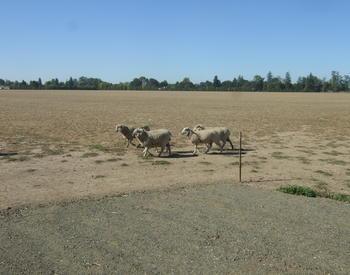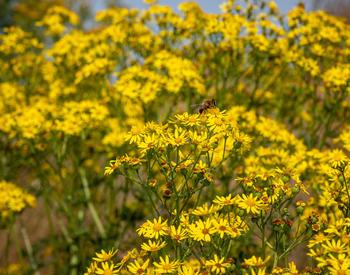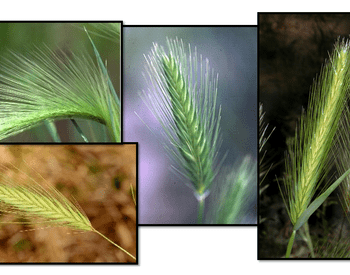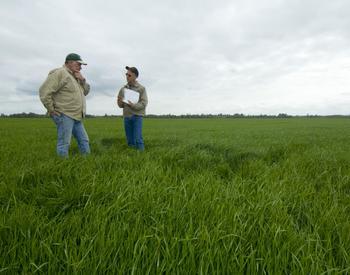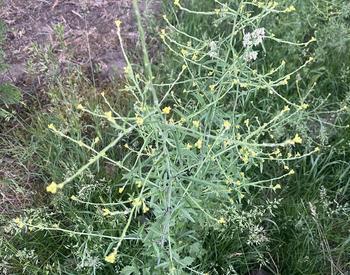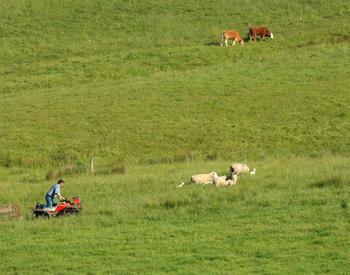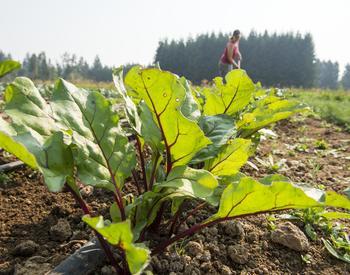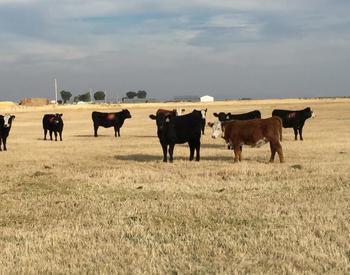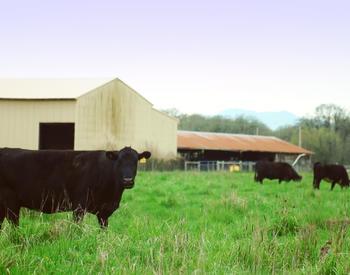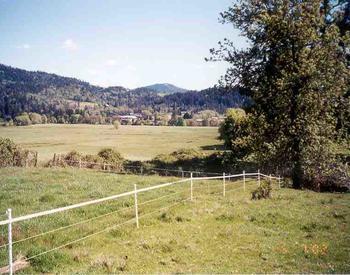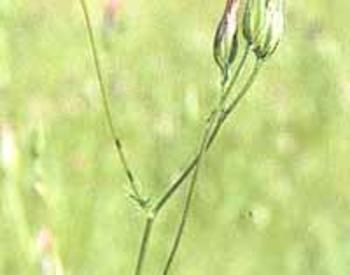Every year producers wait for spring forage growth on their pastures. And every year they wish the grass would come earlier than it usually does.
- What can be done to stimulate earlier growth?
- How can resources be used more efficiently?
These two questions come from the reality that, in parts of Oregon, pasture forage for grazing livestock is lacking early in the growing season. And livestock producers must provide more costly harvested forages as supplemental feed during this time.
To increase forage production, fertilizer is traditionally applied in the spring. The application of fertilizer at the traditional time, which is the middle part of the spring growing season, increases the already accelerated growth rate and does not help with the early lack of feed. The time of the year and the time during the growing season that fertilizer is applied can make a difference in the amount of growth that occurs.
Research in several countries, including the United States, has shown that there is an advantage to an early nitrogen application in a pasture. Forage researchers developed a method called T-Sum 200 to determine the date of that first application to a pasture.
The fertilizer was put on when pasture plants start to grow in mid- to late-winter. A supply of nitrogen early in the growing cycle of a plant can stimulate more pounds of feed during the first part of the grazing season (see Figure 1). It can also be beneficial if an intensive grazing system is used, due to the more frequent, but controlled “harvest” of grass or clover plants by livestock.
Researchers from Oregon State University studied the feasibility of early nitrogen (N) application for Oregon pastures and found it useful and cost effective in providing early season forage. These same researchers also studied the fate of this early applied N and found the N was taken up by the pasture plants and not leached into the groundwater.
Cautions
The most important caution about using the T-Sum 200 method is that it will not fit every ranch or farm. To minimize loss of nitrogen, fertilizer should not be applied to very wet soils, especially ones with some standing water.
And use caution on sandy soils due to the potential for nitrogen loss early in the growing season. Additionally, producers should not turn livestock out onto pastures until the soils are firm as this can cause long-term damage from hoof action on softened ground. Use lighter weight animals for early grazing opportunities.
Steps to get the most benefit from T-Sum 200:
- Identify a pasture that would work for early grazing.
- Make sure there are enough animals to use the feed produced.
- Apply nitrogen at 200 heat units.
- Move livestock in when sufficient forage is available. Be sure to pay attention to the grazing impact in order to avoid damage to pastures with soft soil.
More information on fertilization and the T-Sum 200 method can be found in the OSU publication Nutrient Management for Pastures: Western Oregon and Western Washington.
Calculating T-Sum 200 for early nitrogen applications to pastures
Use these instructions to time the early season application of nitrogen where prudent to do so.
T-Sum 200 is an accumulation of heat units (in degrees C) for consecutive days beginning January 1, until a total of 200 is reached.
Research shows that certain plants such as cool-season grasses initiate growth at or near this time. A heat unit, or growing degree day (GDD), is the average of the high and low temperature for the day, in degrees Celsius.
If the temperature is below 0°C the heat unit is 0. The formula for calculating a T-Sum heat unit is: (maximum °C + minimum °C) ÷ 2. For example, if the high for January 1 is 7°C and the low is -1°C, the number of heat units for that day is 3.5 (7 + 0 ÷ 2 = 3.5).
T-Sum calculations are available online from the Oregon IPM Center at Oregon State University.
- Select the Station tab and find a location near you.
- Select the Model tab to specify the following:
- Model Category — all models.
- Model — degree-day calculator (general purpose).
- Calculation method — single sine, lower 0°C, upper 100°C.
- Start date: January 1.
- End date: February 7.
- Forecast type: NMME extended seasonal forecast.
- Celsius: Celsius.
- Select the Output tab (top of page).
- Make sure you check off the "show full table" box.
- Select Graph (top of page) if you want to see that.
You can see degree day accumulation on a regional map or estimate T-Sum for a specific weather station using an online degree day model.
Some online degree day calculators use degrees F. In this case, T-Sum 200 occurs when 360 degrees F have accumulated (1°C = 1.8°F).
Remember: Only use early N application on fields that have fairly good drainage. Do not apply to standing water. Use forage when fields are ready to receive livestock. Use light-weight cattle or small ruminants as they do not compact soils as easily as heavy cattle and horses.
